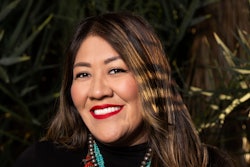JUNEAU, Alaska
Groups in Alaska are criticizing a California university’s decision to eliminate the unit that restores American Indian artifacts to their original owners.
Native leaders worry the move at the University of California, Berkeley will delay or prevent the return of artifacts to tribes and clans under the Native American Graves Protection and Repatriation Act.
The university’s Phoebe A. Hearst Museum of Anthropology boasts the second largest collection of American Indian remains and items in the country, including hundreds of Northwest Coast art and Tlingit, Haida and Tsimshian objects.
“My impression is that this is one of the few museums where the staff is what we call the ‘old guard,’” says Bob Sam, an elder and expert in human remains and burial site restoration, in Sitka. “They have very strong feelings that these items shouldn’t be turned over to the Native people, but that they should be kept in a safe environment.
“This will put a big obstacle in the process,” he says. “It could hold up some repatriation claims for many, many years.”
Five American Indian leaders last week announced the formation of the Native American NAGPRA Coalition to protest the university’s decision.
The Central Council of the Tlingit and Haida Indian Tribes of America wrote a resolution of protest in June.
“The University of California, Berkeley is known to be in the forefront of the fight for human rights and causes, and the NAGPRA law is one such area for human rights and dignity,” reads part of the draft, submitted to the Central Council’s executive committee.
Sealaska Heritage Institute plans to write its own resolution, president Rosita Worl says. The Southeast Alaska Indian Cultural Center in Sitka also is preparing a letter.
“It’s unfortunate,” says Worl, a member of the Native American Graves Protection and Repatriation Review Committee. “NAGPRA has really brought museums and Native Americans close together, at least to the point where they have a working relationship.”
In 2005, Sealaska Heritage worked with the Hearst Museum to return a Chilkat brown bear tunic to the Kaagwaantaan Clan in Klukwan. The museum transferred the tunic to the institute on Oct. 4. It arrived in Juneau two days later and completed its trip to Klukwan the next day.
Sealaska Heritage ethnologist Kathy Miller saw the tunic while photographing the museum’s collection of Southeast Alaska artifacts in Nov. 2004. Joe Hotch, a member of the council and a Kaagwaantaan clan leader, had a 1923 photo of the late Kaagwaantaan clan leader Kudeinahaa wearing the item in Klukwan.
The repatriation process was swift, in part because the university’s NAGPRA office worked on the claim.
“NAGPRA facilitates the claims, but more than that, it establishes a working relationship between museums and tribes,” Worl said. “It really has proven to be beneficial for them in terms of how a lot of museums are working with Native Americans. They are able to get accurate information and educational exhibitions.”
– Associated Press
There are currently 0 comments on this story.
Click here to post a comment.
© Copyright 2005 by DiverseEducation.com















